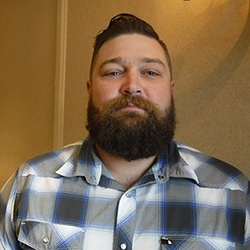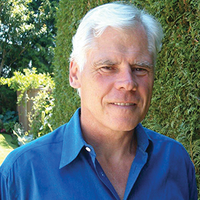By / Shaun Ekert

When we talk about recovery in any form, it is never about going from unwell to healthy in one fell swoop. Whether rebuilding a car engine or rehabing a knee injury, recovery is a process. There is a breaking-in period where therapies, advice, and effort, more therapy, more advice, and sometimes monumentous effort come together in a painstaking but progressive journey toward recovery, punctuated by tiny victories and glimmers of hope on the horizon. We may be right there in that period in the insulation industry. Perhaps the current state of the industry is seasonal, because we are coming into winter, but more than likely we are in recovery mode, and that means we have to adjust our expectations. Individuals who were laid off, businesses that slowed, distributors and manufacturers who changed the way they did business will be in a lull right now, breaking in so to speak, and rehabbing their operations before they get back to the old way or, more likely, the new normal.
As a group, contractors lost a great deal of support staff and field workers over the past several months. Rest assured they are not—they can not—bring them back all at once. Instead, as an industry, we must proceed with cautious optimism and eyes on all fronts. We have owners that have mixed willingness to get budgets approved for next year. Over the past six months, distributors have dialed down their inventory. During the same time, manufacturers have reduced their production. It will take time for those matters to be reinstated, and we have to be patient. We are not sure how strong the return to business will be, but we know we have to fight through it—maybe even more now as the industry is establishing new rules of engagement or expectation. As an example, just try to order something—anything—online right now, and that thing, which used to cost $20 and take two weeks because it was locally sourced now costs $150 and you don’t know when it is coming. If this is happening in general product consumption, it will be happening in insulation.
What can we do? We have to watch the oil level in that rebuilt engine and massage that knee more than usual while we are on the road to recovery. We just don’t know exactly how to navigate it beyond the day-to-day right now, but one thing is certain: we have to work together as an industry. TIAC means more now than it ever has because it is a platform from which we can deliver information and exercise the ability to network and explore the strengths and weaknesses of the supply chain from cradle to grave.
How we react now, in times of crisis, truly shows our character. There will always be the Henny Pennies and the eternal optimists, but the bottom line is, if you have been holding the line for the past several months or incrementally growing, that is a huge win. If you were up to 40 staff, went down to 10, and are back up to 27 that is an incredible success. Perhaps you didn’t have the correct numbers to begin with and were not running as efficiently as you could have been. Every company is leaning out, and that is a good thing, one of the few that has come out of the pandemic. It is unfortunate for some, of course, but a lean company is building the fundamentals for growth. If you rehab correctly, patiently, the strong companies will have the cash flow and human resources to innovate and use technology or leverage more senior leadership in their operations to make it through whatever comes next.
It is time to acknowledge the mechanical insulation industry’s most successful pivots. The term is overused, I know, but it is a relevant concept we all need to learn and appreciate. Obviously, our industry doesn’t benefit from adaptations like Skip the Dishes or curbside delivery like some companies do, but everyone pivoted when they leaned out and the remaining staff and management had to take on new roles. You may no longer have a marketing division or a labour relations department or you may no longer have estimators who hand off to project managers because that is now the same person. That is a return to the basics, and that is a pivot. We can’t sell ourselves short. The companies who are surviving, or dare I say thriving, are those who adapted, and that is key.
Maybe businesses became more efficient in their logistics or processes. In the contracting world, things got so convoluted, it was like a lawyers’ firm with billable hours—you don’t want to simplify because doing so eats away at the bottom line. It was the same in construction projects when contracts, designs, and drawings became so convoluted that anyone connected with that project was more or less confused. Leaning out means that whole process became clear and more efficient and under those circumstances, everyone knows they need to pull their weight.
That is the importance of recognizing and understanding the phase we are in as an industry and association. I want our members to know they can lean on their association to help guide them through. We don’t want to see any members fail. We can help contractors develop the best way forward, and together we can only make the industry and association that much stronger. ▪



